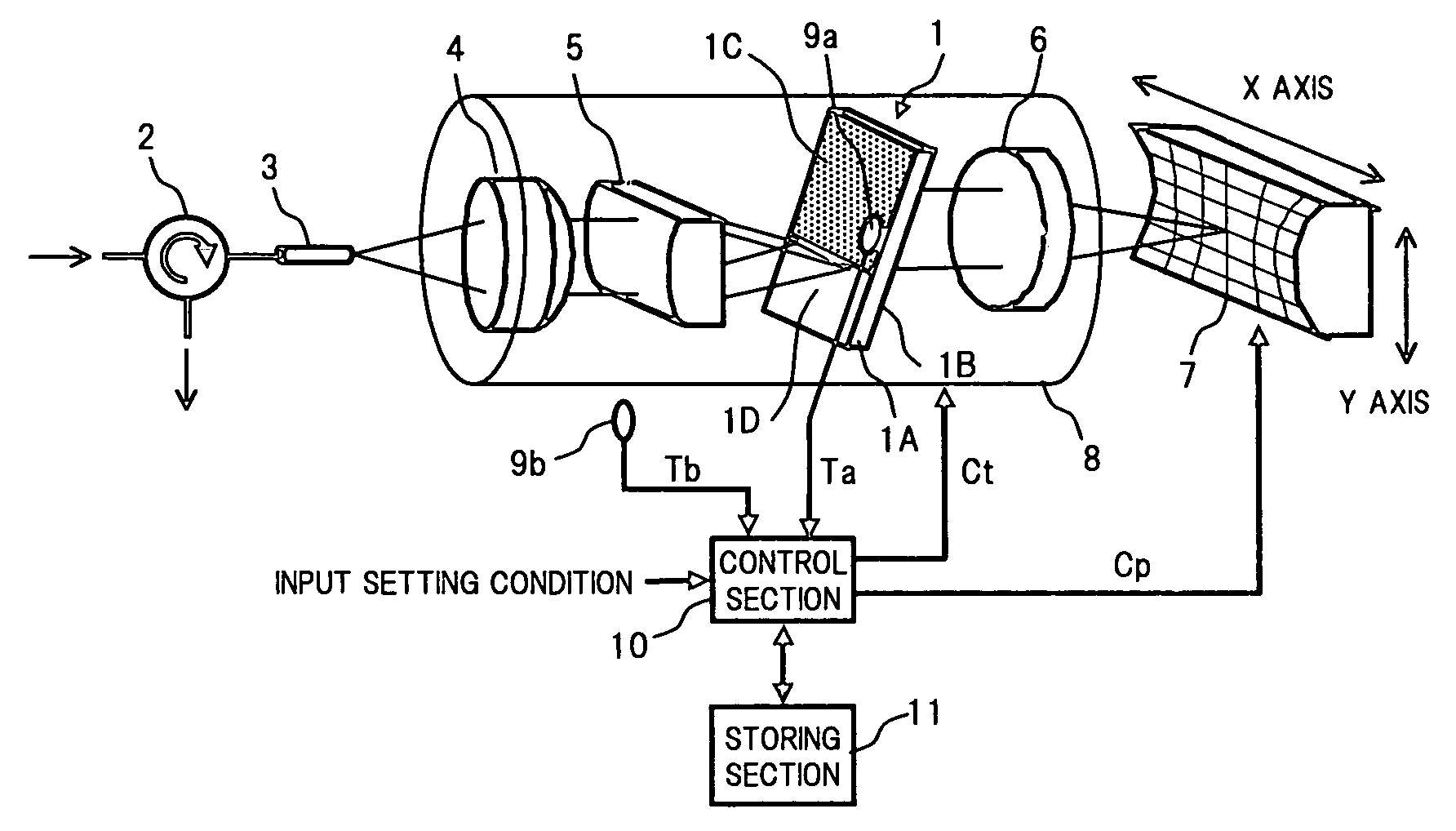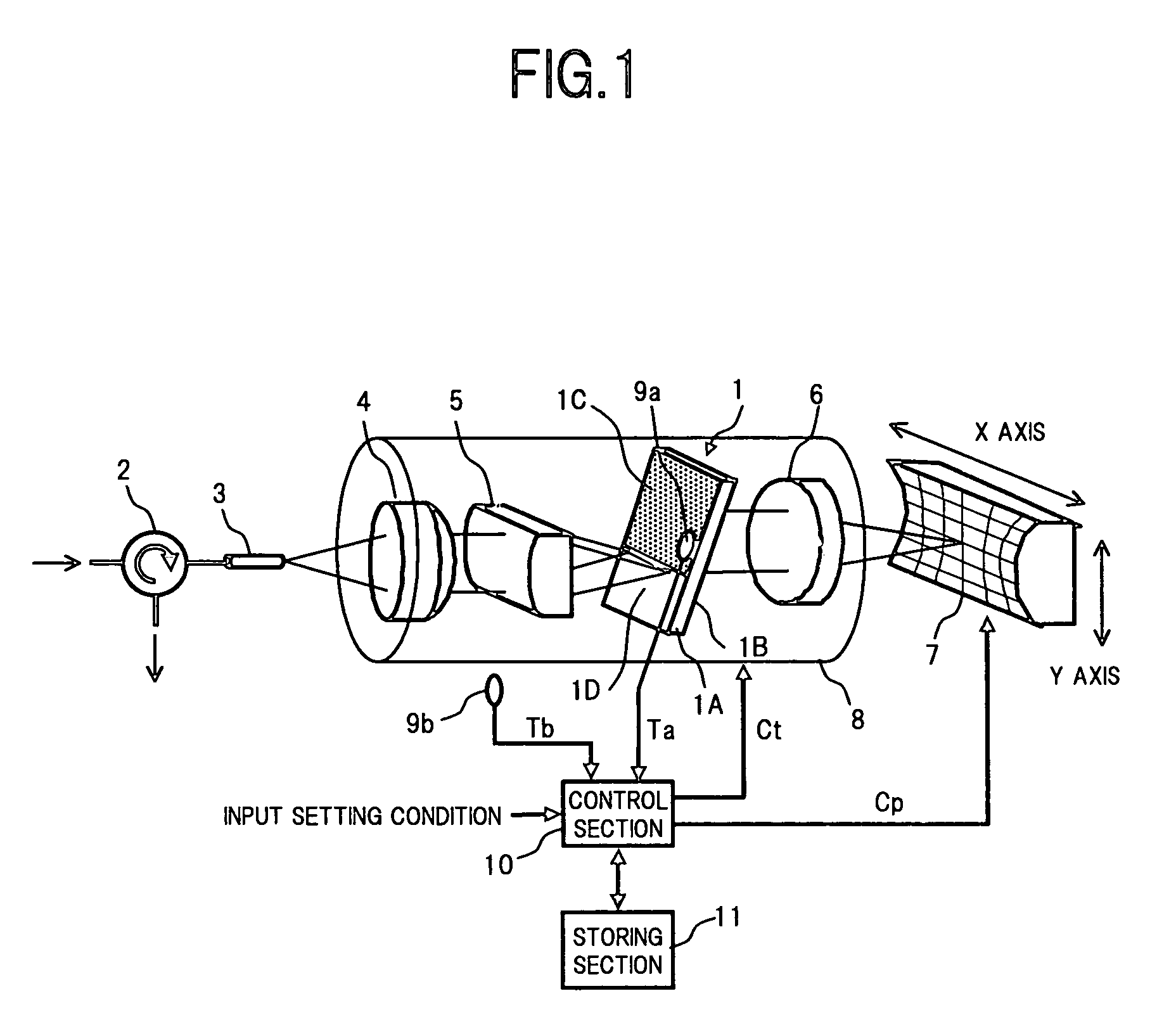Control method of wavelength dispersion compensator, and wavelength dispersion compensator
a wavelength dispersion compensator and control method technology, applied in multiplex communication, transmission monitoring, instruments, etc., can solve the problems of insertion loss characteristic in the transmission band the larger the error of the desired wavelength dispersion value, and the change of the vipa-type wavelength dispersion compensator
- Summary
- Abstract
- Description
- Claims
- Application Information
AI Technical Summary
Benefits of technology
Problems solved by technology
Method used
Image
Examples
Embodiment Construction
[0027]Hereinafter, embodiments of the present invention will be described with reference to drawings.
[0028]FIG. 1 is a functional block diagram showing a configuration of one embodiment of a wavelength dispersion compensator according to the present invention.
[0029]In FIG. 1, the wavelength dispersion compensator of the first embodiment comprises, for example: a VIPA plate 1 as a device having two reflective surfaces which are opposed and parallel to each other; an optical system which consists of an optical circulator 2, an optical fiber 3, a collimate lens 4 and a line focal lens 5, enabling a WDM light condensed on a segment to be incident on a radiation window 1D of the VIPA plate 1; a convergent lens 6 condensing an optical beam that has been multiple-reflected by the VIPA plate 1 to be emitted from one of the parallel surfaces, on one point; a free-form surface mirror 7 serving as a reflector, for reflecting the light condensed by the convergent lens 6 at a required position t...
PUM
 Login to View More
Login to View More Abstract
Description
Claims
Application Information
 Login to View More
Login to View More - R&D
- Intellectual Property
- Life Sciences
- Materials
- Tech Scout
- Unparalleled Data Quality
- Higher Quality Content
- 60% Fewer Hallucinations
Browse by: Latest US Patents, China's latest patents, Technical Efficacy Thesaurus, Application Domain, Technology Topic, Popular Technical Reports.
© 2025 PatSnap. All rights reserved.Legal|Privacy policy|Modern Slavery Act Transparency Statement|Sitemap|About US| Contact US: help@patsnap.com



